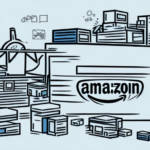Understanding FBA Fees: A Comprehensive Guide
If you're an Amazon seller, you're likely familiar with Fulfillment by Amazon (FBA), a service that allows sellers to store their products in Amazon's warehouses while Amazon handles shipping, customer service, and returns. While FBA offers significant advantages in terms of efficiency and scalability, understanding the associated fees is crucial for maintaining healthy profit margins. This guide provides an in-depth analysis of FBA fees, helping you make informed decisions for your Amazon business.
Types of FBA Fees
FBA fees encompass various charges that Amazon applies for providing its fulfillment services. Understanding these fees is essential for accurately calculating your costs and setting appropriate pricing strategies.
Fulfillment Fees
These fees cover the cost of storing, picking, packing, and shipping your products to customers. Fulfillment fees are calculated based on the size and weight of your products.
Storage Fees
Amazon charges monthly storage fees based on the volume (measured in cubic feet) your inventory occupies in their warehouses. Additionally, long-term storage fees apply for items stored for over 365 days.
Referral Fees
Referral fees are a percentage of the total sales price of each item sold, varying by product category. For example, electronics typically incur higher referral fees compared to books or toys.
Other Fees
Additional fees may include:
- Removal Fees: Charged when you request the removal of your inventory from Amazon's warehouses.
- Disposal Fees: Applied when you choose to dispose of unsellable inventory.
- Labeling Fees: Incurred if your products arrive at the fulfillment center without proper labeling.
Detailed Breakdown of FBA Fulfillment Fees
FBA fulfillment fees are determined by the size and weight of your products. Here's an overview based on Amazon's 2023 fee structure:
| Product Size Tier | Standard-Size Fulfillment Fee | Oversize Fulfillment Fee |
|---|---|---|
| Small (less than 1 lb) | $2.50 | $8.26 |
| Standard (1 lb or more) | $3.30 | $8.26 + $0.38/lb for each additional pound above 2 lb |
| Oversize (greater than 18" on the longest side or over 20 lb) | $8.26 + $0.38/lb for each additional pound above 2 lb | $75.78 + $0.79/lb for each additional pound above 90 lb |
For the most accurate and up-to-date information, refer to Amazon's official FBA Revenue Calculator.
Referral Fees Explained
Referral fees are a critical component of FBA costs, representing a percentage of each sale price. These fees vary by category and can significantly impact your profitability:
- Electronics: Typically around 8%
- Books: Approximately 15%
- Toys: Generally around 15%
It's essential to factor in these fees when setting your product prices to ensure profitability. For detailed referral fee structures, visit Amazon’s Referral Fees Guide.
Calculating Your FBA Fees
Accurately calculating FBA fees is vital for maintaining profit margins. Amazon provides an FBA Fee Calculator that can help you estimate these costs by entering your product details.
However, it's important to consider additional costs beyond FBA fees, such as:
- Product Manufacturing Costs: The cost to produce your products.
- Shipping to Amazon: Expenses incurred when sending inventory to Amazon's fulfillment centers.
- Advertising Costs: Expenses related to promoting your products on Amazon.
Comprehensively accounting for all these costs will provide a clearer picture of your overall profitability.
Strategies to Reduce FBA Fees
While FBA fees are inevitable, several strategies can help minimize these costs:
Optimize Product Packaging
Reducing the size and weight of your packaging can lower fulfillment fees. Consider designing compact packaging that still protects your products effectively.
Manage Inventory Efficiently
Regularly monitor your inventory levels to avoid long-term storage fees. Utilize Amazon’s inventory management tools to maintain optimal stock levels.
Leverage Amazon’s Multi-Channel Fulfillment
Using Amazon's Multi-Channel Fulfillment (MCF) service for orders from other sales channels can sometimes be more cost-effective than fulfilling all orders through FBA.
Review and Adjust Pricing Strategies
Ensure your pricing accounts for all costs, including referral fees, to maintain profitability. Regularly review your pricing strategy to adapt to any fee changes.
Common Mistakes to Avoid
Many FBA sellers encounter pitfalls that can erode their profits. Avoid these common mistakes to enhance your business’s success:
Not Accounting for All Fees
Failing to consider all applicable fees can lead to underestimated costs and reduced profitability. Ensure you account for fulfillment, storage, referral, and other fees in your pricing strategy.
Poor Inventory Management
Overstocking can result in excessive storage fees, while understocking can lead to lost sales. Use inventory forecasting tools to maintain balanced stock levels.
Ignoring Fee Updates
Amazon periodically updates its fee structures. Stay informed about any changes to adjust your strategies accordingly and avoid unexpected costs.
Comparing FBA to Other Fulfillment Options
While FBA offers numerous benefits, it’s essential to evaluate it against other fulfillment methods to determine the best fit for your business:
Self-Fulfillment
Handling fulfillment yourself gives you complete control over the process but can be time-consuming and less scalable, especially as your business grows.
Third-Party Fulfillment Services
Using a third-party fulfillment service can offer more flexibility and potentially lower costs for certain business models. Services like ShipBob provide comprehensive fulfillment solutions tailored to your needs.
Amazon’s Multi-Channel Fulfillment
MCF allows you to use Amazon’s fulfillment network to fulfill orders from other sales channels. This can be a cost-effective option if you sell on multiple platforms.
Impact of FBA Fees on Profit Margins
FBA fees directly affect your profit margins, making it imperative to understand and manage these costs effectively. Higher fees can diminish profits, especially for low-margin products. To mitigate this impact:
- Regularly review your pricing to ensure it covers all costs.
- Focus on high-margin products to maximize profitability.
- Explore ways to reduce costs through packaging optimization and efficient inventory management.
For a detailed analysis of how FBA fees affect your bottom line, refer to the Business Insider’s guide on FBA fee calculations.
Conclusion
Understanding and managing FBA fees is essential for the success of your Amazon business. By familiarizing yourself with the different types of fees, using available tools to calculate costs, and implementing strategies to minimize expenses, you can enhance your profitability and sustain long-term growth. Stay informed about fee changes and continuously optimize your operations to make the most of Amazon’s fulfillment services.






















